Incense burner
A bronze incense burner (Jp. kōro 香炉) in three parts – an elephant, which serves as a base and also as a container for incense, and the lower and upper floors of a pagoda with a roof. Thus, the two-story Chinese pagoda on the back of an elephant covers the incense, and its windows are openings to let out the fragrant smoke. The depiction of the elephant mimics the refined style of Ming Dynasty (1368–1644) sculpture, recognisable by the spherical lion paws, the cobra-like trunk pointing upward, which is said to bring good luck, and the long tail curled into the shape of the letter S. The elephant’s back is covered with a rich blanket decorated on each side with a relief depiction of a writhing dragon. The dragon has only three claws on each paw, indicating that it is a Japanese dragon Mizuchi 蛟 (Ch. panlong 蟠龍 or jiaolong 蛟龍). (The Chinese dragon, representing the imperial symbol, is always shown with four or five claws.) The ... more
A bronze incense burner (Jp. kōro 香炉) in three parts – an elephant, which serves as a base and also as a container for incense, and the lower and upper floors of a pagoda with a roof. Thus, the two-story Chinese pagoda on the back of an elephant covers the incense, and its windows are openings to let out the fragrant smoke. The depiction of the elephant mimics the refined style of Ming Dynasty (1368–1644) sculpture, recognisable by the spherical lion paws, the cobra-like trunk pointing upward, which is said to bring good luck, and the long tail curled into the shape of the letter S. The elephant’s back is covered with a rich blanket decorated on each side with a relief depiction of a writhing dragon. The dragon has only three claws on each paw, indicating that it is a Japanese dragon Mizuchi 蛟 (Ch. panlong 蟠龍 or jiaolong 蛟龍). (The Chinese dragon, representing the imperial symbol, is always shown with four or five claws.) The back of the quilt is engraved with a Japanese dragon called the “golden bird” (Ōgonchō 黃金鳥), which according to legend lives in a small bottomless lake in Yamashiro near Kyoto. The pagoda (baota 寶塔) is a characteristic flattened Chinese construction with strongly curved roof edges. Another Japanese dragon entwines the rounded finial at the top of the pagoda.
Despite its Japanese origin, the incense burner is a combination of Chinese motifs and Japanese features. In fact, the elephant with the pagoda on its back is a typical Chinese motif that spread throughout East Asia, including Japan, as a result of cultural exchange, especially with the spread of Buddhism. The Chinese name of the motif, taiping youxiang 太平有象, can be literally translated as “peace-bringing elephant”. Elephants had an important place and a strong symbolic role in China long before the arrival of Buddhism, and with Buddhism, the elephant acquired a new set of connotations and symbolic meanings, standing for wisdom, prudence, and strength as well as happiness and wealth. The motif of an elephant carrying a large object (e.g. a vase or pagoda) or a rider on its back also became more widespread. This usually symbolises good fortune, peace, and abundance. On the one hand, the pagoda in the Buddhist tradition is an auspicious sign. An additional layer of significance comes from the Chinese tradition of creating symbolic meanings deriving from the same or similar sounding characters. An elephant carrying a vase on its back symbolically brings peace, because “vase” (ping 瓶) sounds similar to “peace” (ping 平). The elephant’s popularity as a form for incense burners can again can be explained by a play with homophones, since, “elephant” (xiang 象) sounds like “fragrance” or “fragrant” (xiang 香). Hence, containers for perfume, fragrances, and incense were often made in the shape of an elephant.
As such a complex and symbolic motif, the elephant with the pagoda on its back spread throughout East Asia, including Japan, along with Buddhism and other cultural and trade ties. It became especially popular in Japan with the flourishing of metallurgy and the production of large bronze vessels during the Meiji period (1868–1912). Especially in the old capital of Kyoto, the production of decorative bronze objects increased greatly with the decline of the samurai and the resulting need to retrain blacksmiths and craftsmen who had previously made swords and other samurai military equipment. Considering Japanese imperialism and expansionist policies of the time, and the resulting frequent migration of Japanese craftsmen to China, Taiwan, and Korea, it is possible that the incense burner was made and purchased in Japan. Today we find many similar or nearly identical examples bearing the artist’s mark in Japanese kanji on the underside (i.e., on the elephant’s belly): “made by Fukui Yoshiuji” (Jp. Fukui Yoshiuji seizō 福井吉氏製造). However, in the case of this object, this mark has been removed, so it is not possible to confirm with certainty its association with the named craftsman and his workshop. It seems that this part of the incense burner was intentionally refashioned for some reason, perhaps even for another use in a secondary environment. Another likely possibility is that the seal was removed or covered by an antique dealer to disguise the origin and date of creation, thus increasing the price of the object. (MG)
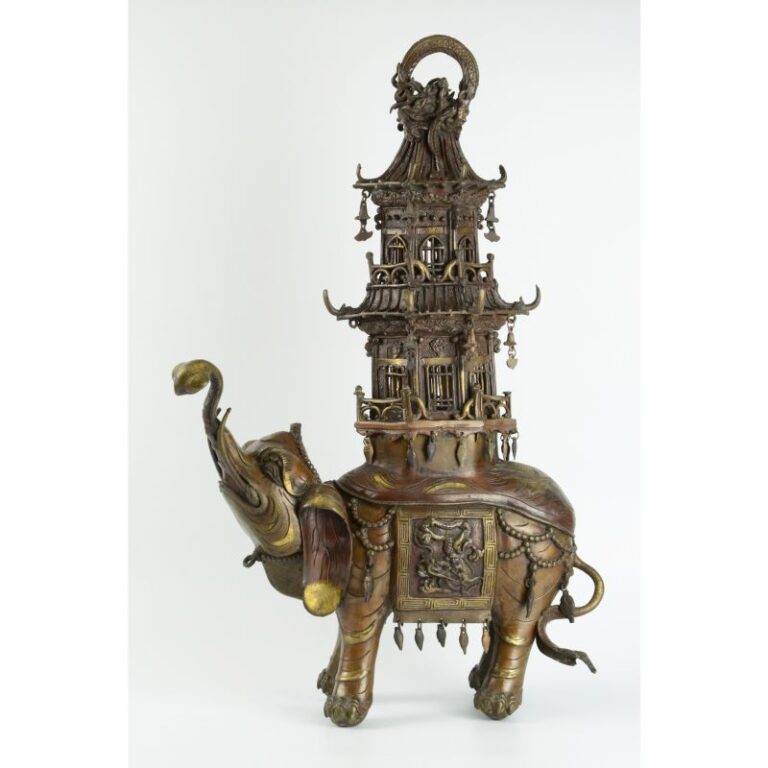









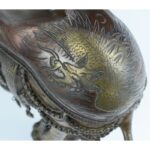





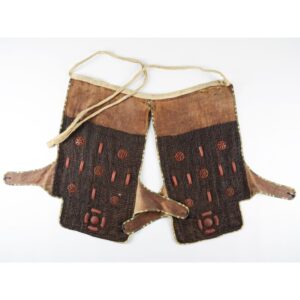
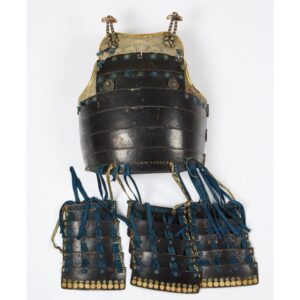
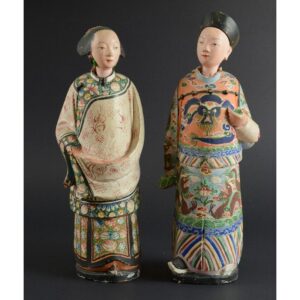












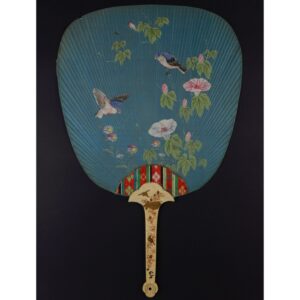














Do you have a comment or additional information about the subject?